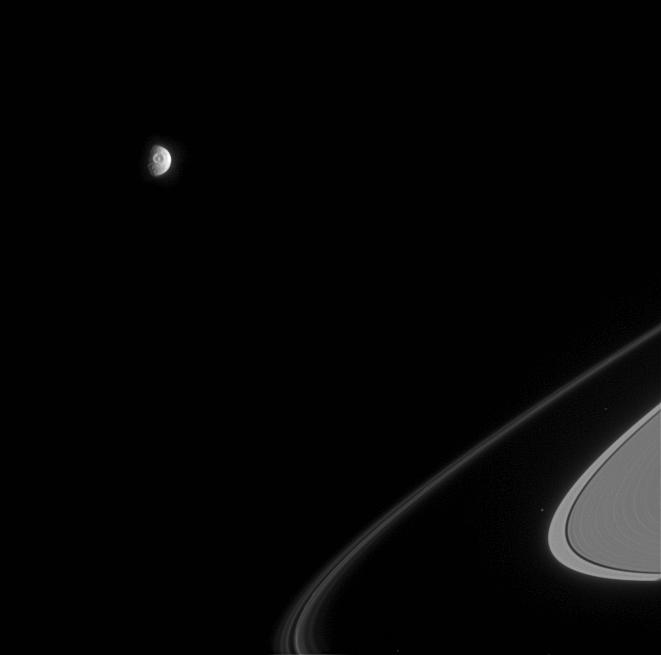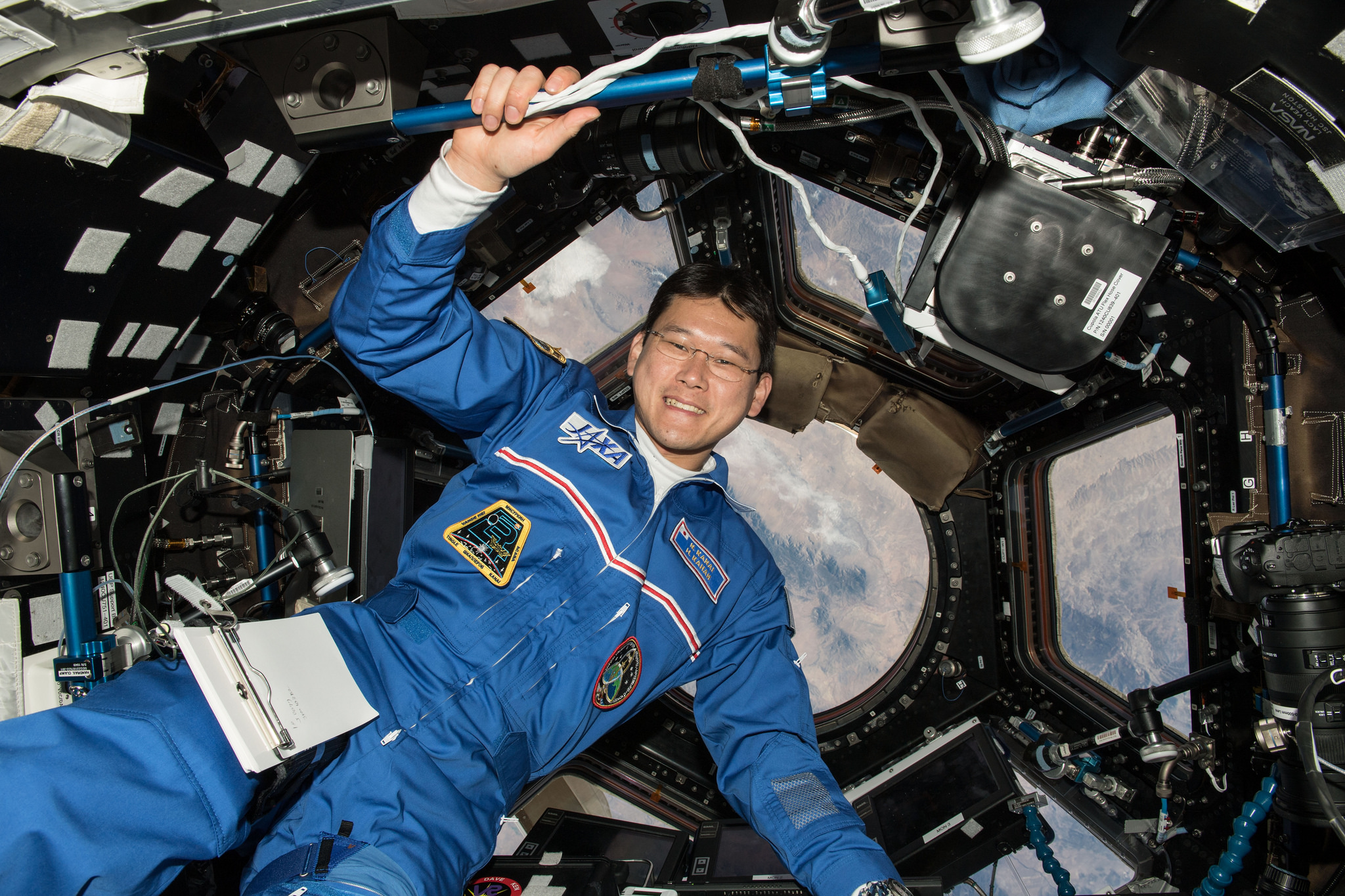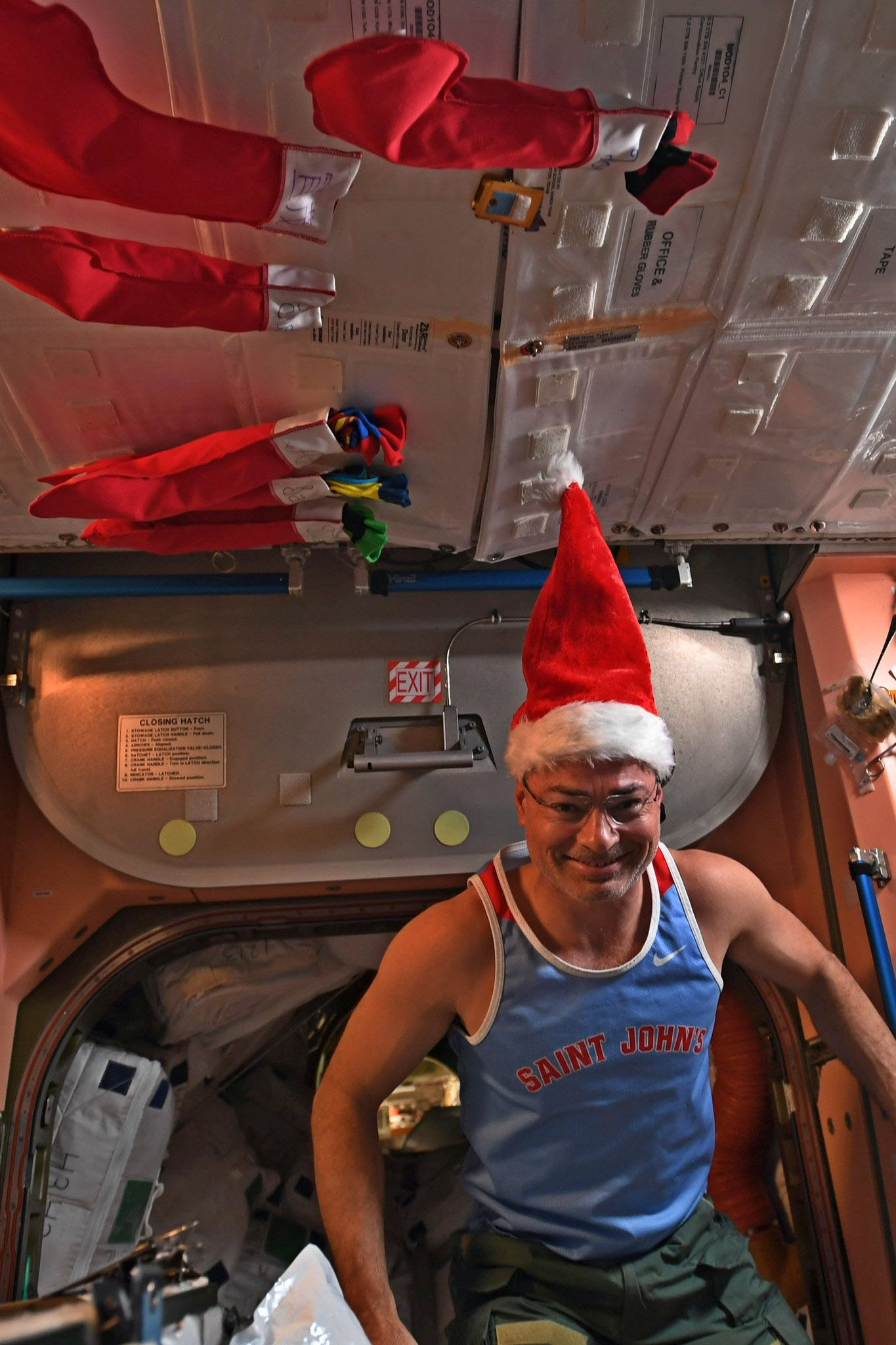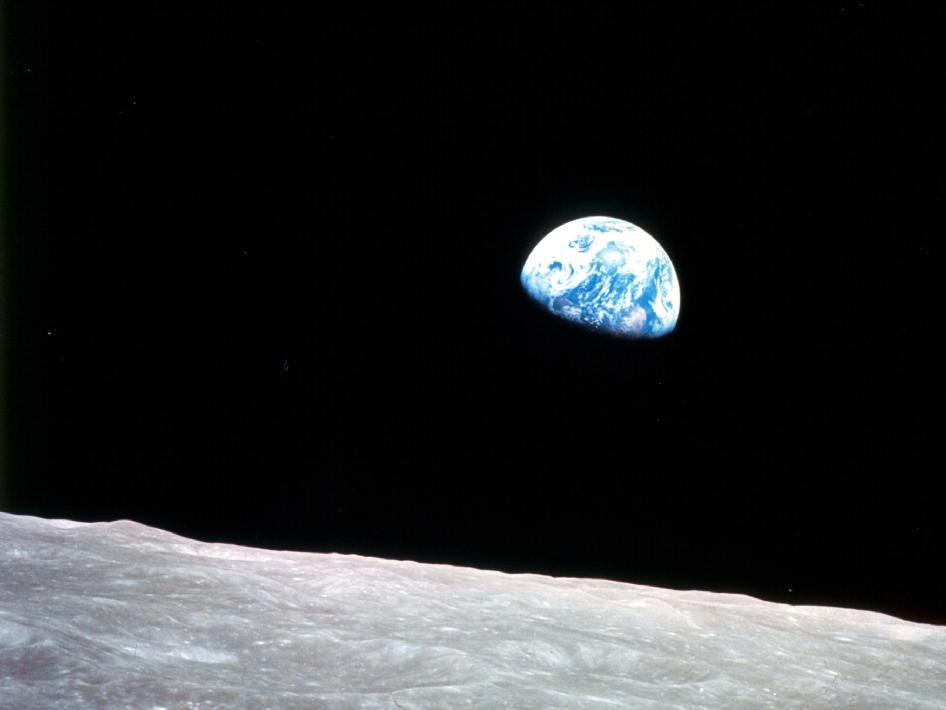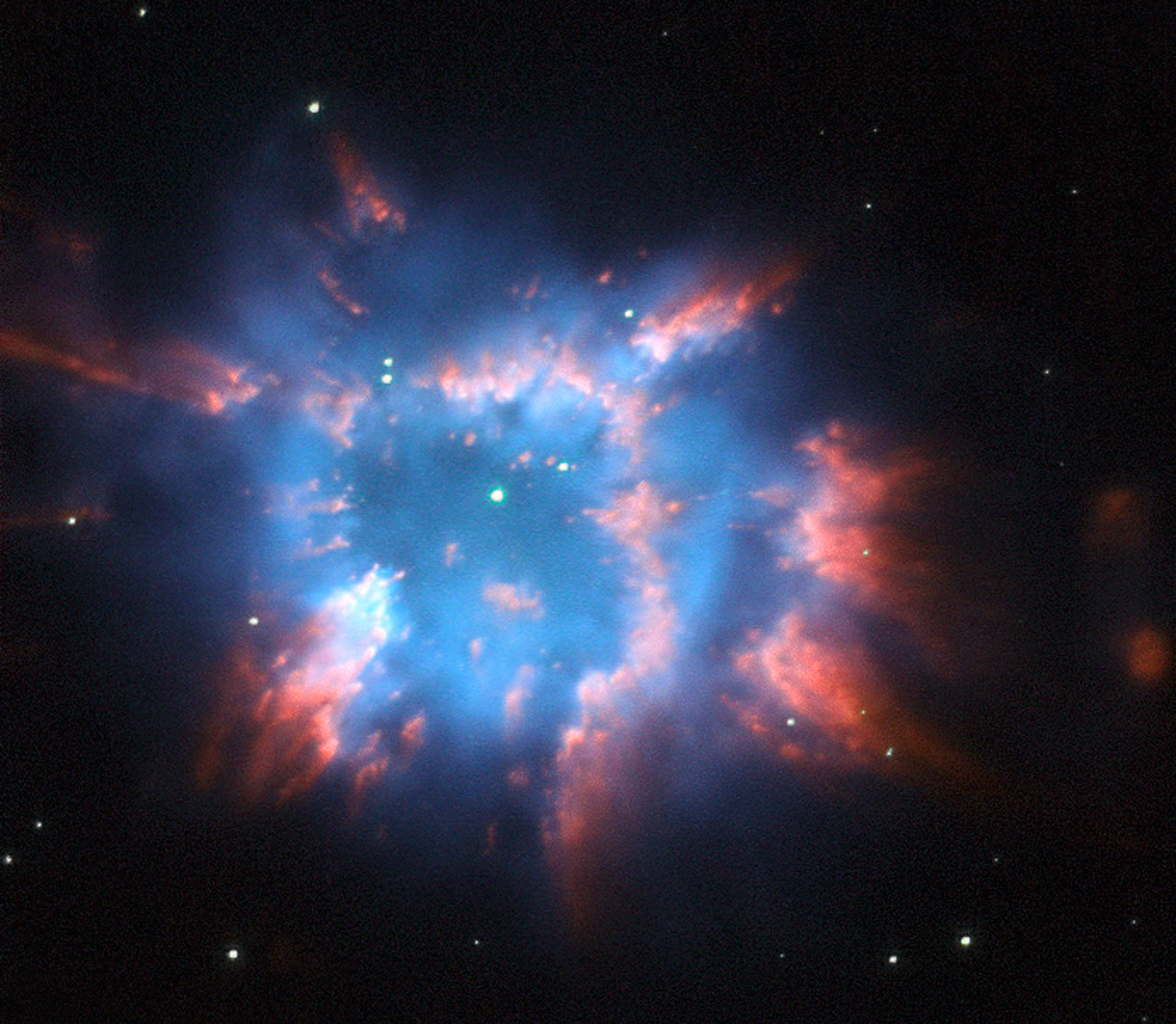Space Image of the Day Gallery (December 2017)
That's No Moon!
Friday, December 15, 2017: Actually, that is a moon — Saturn's "Death Star" moon, Mimas. With the giant Herschel crater on its surface, this little moon resembles the planet-destroying space weapon in the "Star Wars" movies. NASA's Cassini spacecraft took this photo of the moon while it was in orbit around Saturn in 2005. — Hanneke Weitering
Geminid Meteor Over Alaska
Monday, December 18, 2017: A gorgeous, green meteor flies toward the northern lights in this stunning image by astrophotographer Matthew Skinner. He captured the meteor over a mountain range near Palmer, Alaska just after midnight on Dec. 14, when the Geminid meteor shower was at its peak. To the left of the meteor, a lime-green aurora peeks out from the top of the mountain range. — Hanneke Weitering
Airplane Flies by the Supermoon
Tuesday, December 19, 2017: An airplane flies in front of December's full "supermoon" in this photo taken by Steve Schroff in Kent, Ohio. During a supermoon, the full moon appears slightly bigger and brighter than usual, because the moon makes its closest approach to Earth around the same time that it reaches its fullest phase. "Lucked out and caught a jet with nice set of contrails passing by," Schroff told Space.com in an email. "You can see the engines were underwing and not fuselage-mounted, likely a 737 or A319." — Hanneke Weitering
Under the Milky Way
Wednesday, December 20, 2017: Astrophotographer Ryan Rivera and his girlfriend hang out under the Milky Way in this stellar self-portrait. "Location and timing really make a difference when chasing the Milky Way," Rivera wrote on Instagram. "Shooting just south of Asheville, NC during the new moon and aiming south (avoiding light pollution) really helps bring out everything in the night sky." — Hanneke Weitering
A Swirling Sea of Jovian Clouds
Thursday, December 21, 2017: Clouds and storms swirl on Jupiter in this image from NASA's Juno spacecraft. Citizen scientist Kevin Gill used data collected by the spacecraft's JunoCam imager during a flyby on July 11 to create this color-enhanced view. — Hanneke Weitering
Norishige Kanai's 1st Day in Space
Friday, December 22, 2017: Japanese Aerospace Exploration Agency astronaut Norishige Kanai floats weightlessly in the International Space Station's Cupola observatory in this photo taken on Tuesday (Dec. 19), shortly after he and his two Expedition 54/55 crewmates arrived at the orbiting laboratory. — Hanneke Weitering
Merry Christmas from Space!
Monday, December 25, 2017: The Christmas spirit has reached all the way to space in this photo from NASA astronaut Mark Vande Hei, part of the International Space Station's Expedition 54 crew, on Dec. 25, 2017. "Merry Christmas from the International Space Station!" Vande Hei wrote on Twitter. Read how astronauts celebrate Christmas in space!
Breaking space news, the latest updates on rocket launches, skywatching events and more!
Earthrise on Christmas
Tuesday, December 26, 2017: On Christmas Eve in 1968, three NASA astronauts became the first people to see Earth from deep space after they entered lunar orbit during the Apollo 8 moon mission. Cmdr. Frank Borman, command module pilot Jim Lovell, and lunar module pilot William Anders witnessed this view of the "Earthrise" over the lunar horizon and held a live television broadcast in which they showed this photo to people back on Earth. — Hanneke Weitering
An Airplane, the Moon and the Milky Way
Wednesday, December 27, 2017: An airplane appears to head straight for the Milky Way in this self portrait taken by astrophotographer Ryan Rivera in Longboat Key, Florida. — Hanneke Weitering
A Hubble Holiday Ornament
Thursday, December 28, 2017: This Hubble Space Telescope photo of a cosmic holiday ornament shows NGC 6326, a planetary nebula of glowing gas surrounding a star that is near the end of its life. "When a star ages and the red giant phase of its life comes to an end, it starts to eject layers of gas from its surface leaving behind a hot and compact white dwarf. Sometimes this ejection results in elegantly symmetric patterns of glowing gas, but NGC 6326 is much less structured. This object is located in the constellation of Ara, the Altar, about 11,000 light-years from Earth," European Space Agency officials wrote in an image description. - Tariq Malik

Space.com is the premier source of space exploration, innovation and astronomy news, chronicling (and celebrating) humanity's ongoing expansion across the final frontier. Originally founded in 1999, Space.com is, and always has been, the passion of writers and editors who are space fans and also trained journalists. Our current news team consists of Editor-in-Chief Tariq Malik; Editor Hanneke Weitering, Senior Space Writer Mike Wall; Senior Writer Meghan Bartels; Senior Writer Chelsea Gohd, Senior Writer Tereza Pultarova and Staff Writer Alexander Cox, focusing on e-commerce. Senior Producer Steve Spaleta oversees our space videos, with Diana Whitcroft as our Social Media Editor.
